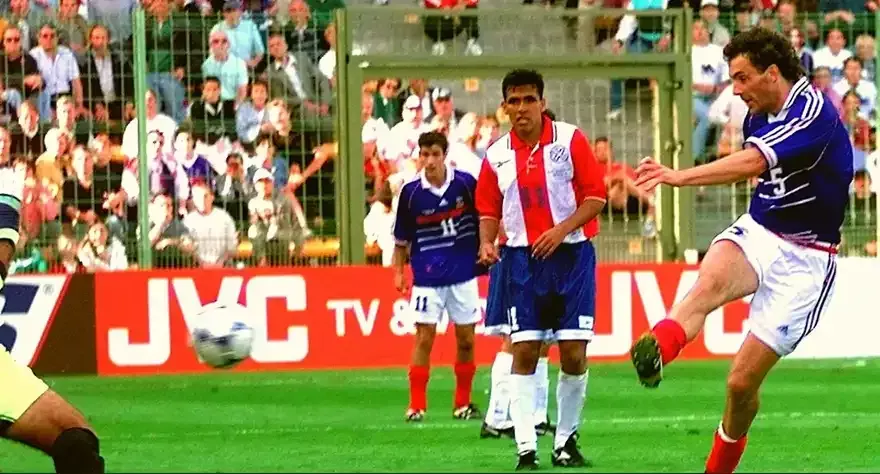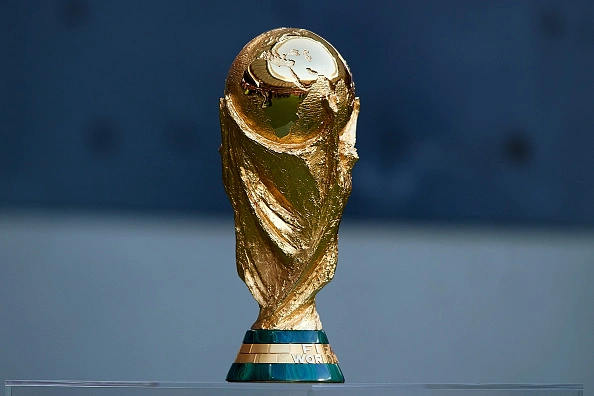
THE MOST ICONIC SKILL MOVES IN FOOTBALL HISTORY
Investing in skill moves is never a bad idea. Magical moments are common in football. There is a strong connection between the best teams and the biggest crowds because people desire to watch quality football. Over the years, there have been some incredible players who have graced the game, and some have left their mark through signature moves. Real-life stars have brought out plenty of skill moves in the past, and here are some of the most iconic tricks of all time.
The Seal Dribble
An association football seal dribble is a type of dribbling. Players perform this feat by flicking the ball up from the ground onto their heads, followed by running past opponents while bouncing the ball on their foreheads as they imitate seals. In the history of professional football, Kerlon's Seal Dribble remains one of the most striking examples of skill. Using his teeth, the Brazilian would flick the ball into the air, catch it with his forehead and then run past defenders while balancing the ball on his head. It was unstoppable until gravity finally intervened. This is not a move that is frequently seen, but whenever you see it, it is always memorable.
The Trivela
It is the act of curling a ball with the outside of the foot, known as trivela in Portuguese. The technique is notably used by Ricardo Quaresma. Diving or dipping shots are defined as straight curls (rather than side curls) on a ball when used as a topspin technique. Quaresma has perfected the art of kicking with his outside boot, earning him the title of Trivela king. Playground favorites like the Trivela are more than just outside-of-the-boot kicks. If played by the right feet, such as Ricardo Quaresma's, the Trivela is an unstoppable curling pass that defies all physics and is borderline unstoppable. A Trivela has been the source of some of the most famous crosses and goals in football history, and that trend is likely to continue for many years to come.
La Cuauhteminha
This technique involves trapping the ball between both feet and leaping in the air to jump over a defender's challenge. The name "La Cuauhteminha" has been used by only one man, Mexican football player Cuauhtemoc Blanco, for the past two decades. In many situations, Blanco would hold the ball between both feet and hop through the air, allowing him to carry the ball past his opponents while facing two defenders. In spite of the fact that this move is not always successful, it is highly entertaining and could leave a number of defenders embarrassed when executed properly.
The Rabona
In association football, the Rabona involves crossing the kicking leg behind the back of the standing leg when kicking the ball. A variety of situations can be accommodated by Rabona, another eye-catching piece. It is a technique that involves wrapping one foot around the other to make contact with the ball. Players have conducted Rabonas as a pass, cross, and even to score goals, and each time it stands out as an impressive play. Rabona is generally associated with Ricardo Infante, who introduced it to Argentinian football in 1948, despite its unknown creator.
The Rainbow Flick
Association football players use rainbow kicks to flick the ball around from one side to the other. Ball trajectory gives the trick its name. There are not many Rainbow Flicks in professional football, but when they occur, they are one of the most beautiful sights to witness. As well as Jay Jay Okocha and Neymar, there are many players who are not afraid to pull out a Rainbow Flick, staring their opponents in the eyes and flicking the ball over their own heads as well as those of their opponents' defenders. One of the moves you strive to perfect more than others, but actually, it requires an extraordinary level of skill.
The Elastico
An offensive player in possession of the ball may employ the flip-flap dribbling move to confuse a defensive player into thinking the offensive player is going to move in a direction they do not intend to. In 1970, Rivelino introduced the Flip-Flap, also known as the Akka, to the world, making it famous with Ronaldinho. Rivelino learned the trick from his close friend Sergio Echigo, who went to that year's World Cup prepared to terrorize defenders. His skill was in flicking the ball to one side as if he was driving, while with the same foot, flicking it back across his defender in a flash. Elastico was taken to a whole new level when Ronaldinho adopted it as his own.
The Cruyff Turn
An evasive dribbling move named after Dutch footballer Johan Cruyff, the Cruyff turn is used in football. Footballers often use the Cruyff turn as one of their most evasive techniques. Despite the fact that the Dutch hero performed it countless times before, it was not until the 1974 World Cup in Germany that it was witnessed for the first time by the masses. It was completely confusing for the Swedish defender as Cruyff, one of the most talented players in the history of the game, faked to pass the ball but then dragged it in the opposite direction and headed for the penalty area.
The Panenka
When taking a penalty kick in association football, the Panenka is a technique whereby the taker, instead of kicking it to the left or right of the goalkeeper, gives a light touch beneath it, causing it to rise and fall within the center of the goal, thus deceiving the goalkeeper, who is supposed to have guessed the side and dived away. The technique was developed by Czech player Antonín Panenka. Known as "the Panenka", this tactic involves a player nonchalantly chipping the ball down the center of the goal while the goalkeeper dives either way. Against Germany, Antonin Panenka had a chance to score the winning penalty for Czechoslovakia. Taking on German goalkeeper Sepp Maier, Panenka lofted the ball into the center of the goal and past the keeper.
The Marseille Roulette
This specialized dribbling skill, also known as the 360, the Spin, the Mooresy Roulette, the Roulette, the Girosflin, and the double drag-back, is unique to association football. There are many different names for this skill move, which makes it difficult to determine its exact origin. Diego Maradona became famous for this move. The Marseille roulette is performed by standing on the ball with one foot, spinning over it to shield it from the opponent, and dragging it away with the other foot.
The Ronaldo Chop
When you are facing a defender one-on-one, the Ronaldo Chop is a technical soccer move. Approach the defender at a slight angle while in control of the ball with one foot and a slight angle with the other. A Ronaldo Chop is a dribbling trick named for the soccer star Cristiano Ronaldo, who was the inventor of the move. With the Ronaldo Chop, you are able to change directions quickly so the defenders do not have a chance to follow you and you can keep attacking. It is no secret that Cristiano Ronaldo is one of the finest players to have ever graced the game - his recent exploits against Sweden, in which he scored a hat-trick, prove as much. Ronaldo's most successful trick is the "Ronaldo chop." Real Madrid's player often attacks opposition opponents at speed, using the inside of either foot to move the ball inside the standing leg and at an angle that takes him in an entirely different direction while facing a player from the opposing team.
The Okocha Turn
In addition to rolling the ball in one direction with the studs of one boot, Okocha would then fake with the other foot to take the ball in the opposite direction, but instead, step over the ball and proceed as before, often leaving the defenders off guard. The Premier League has never seen a trickster as good as Augustine Okocha - the man so good, he was called twice - in its history. Nigerian footballer Okocha had several evasive moves at his disposal, but his most famous trick was the "Okocha turn."
The Puskas 'V' Move
Rather than shooting, the forward drags the ball back, fooling the sliding defender, and moves in a different direction in one fluid movement. The Hungarian forward Ferenc Puskas played for Real Madrid, among others, and his goal-scoring record is among the best. In 1953, Puskas performed his most famous trick for Hungary. On receiving the ball near the six-yard box, the forward drags the ball back, fooling the sliding defender, and moves in a different direction in one fluid motion.
The Step-Over
An offensive player who is in possession of the ball may execute a step-over in order to fool the defensive player into believing that the offensive player is going to move in a direction that the offensive player does not intend to move in. One of the easiest and most effective tricks in football, "the step-over," can create a play area to pass, cross or shoot if performed correctly. It is believed that Dutch footballer Law Adam was the first to perfect the trick, although many other players have used it throughout the history of football, including Chris Waddle, Zinedine Zidane, and Cristiano Ronaldo.
The Back-Heel
The leg should be moved over the top of the ball. Keeping your leg bent, kick your leg backward. The top of your heel should be used to strike the center of the ball. This movement does not require you to raise your knee up to hip level, nor do you need to make the movement particularly large in order to increase the power of the shot. In football, one of the simplest tricks is to use the back heel, but if used correctly, it can be extremely effective. Essentially, "the back heel" is the best way to play a pass or a shot in the opposite direction from where a player is facing. Alfredo di Stefano is believed to have been one of the first to use it when he scored one of his four goals against Atletico Madrid in 1955.
The Scorpion Trick
Alternatively known as a reverse bicycle kick or back hammer kick, the scorpion kick is a physical move in association football that is performed by diving or throwing the body forward and lunging the back heels forward to kick an incoming ball. This may not have been a trick many people would have seen, but Giuseppe Biava's goal against Reggina is truly astonishing. Because of his ability to contort his body when the ball was seemingly beyond reach, "the Biava" was given its name.
The Dive: Jurgen Klinsmann
There are a number of tricks that are used by sportsmen to con the referee into giving them a free kick, but the most hated of them all is the dive. This tactic has been in use for years and has now become widely adopted by a number of footballers. In spite of the fact that many players have performed this trick before, it was not until the 1990 World Cup that it reared its ugly head properly as a result of a dive taken by the German international Jurgen Klinsmann. It was so much talked about Klinsmann's dive that he adopted it as his celebration while playing for Tottenham in the Premier League. Whether you love it or hate it, "the dive" has become one of the most popular tricks in the world and, when executed properly, can be a highly effective way to defeat your opponent.
By Rashmi Goel







